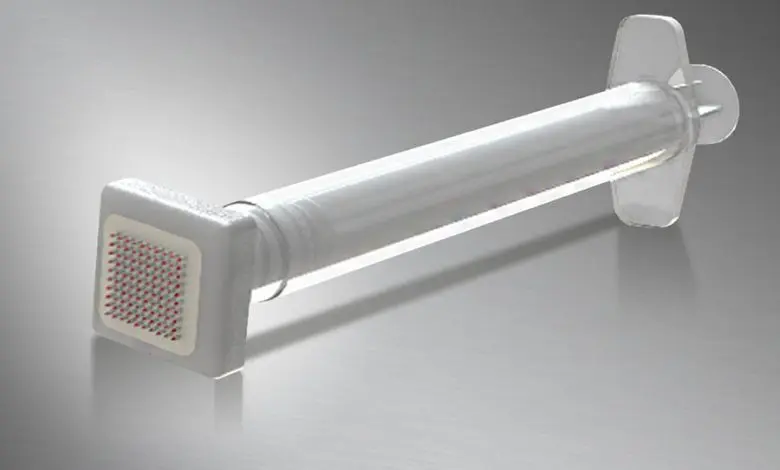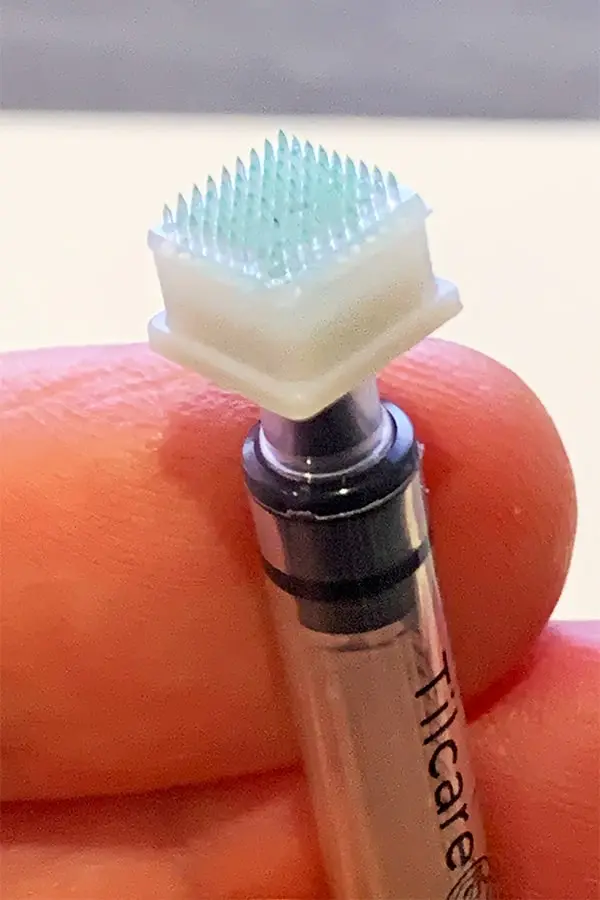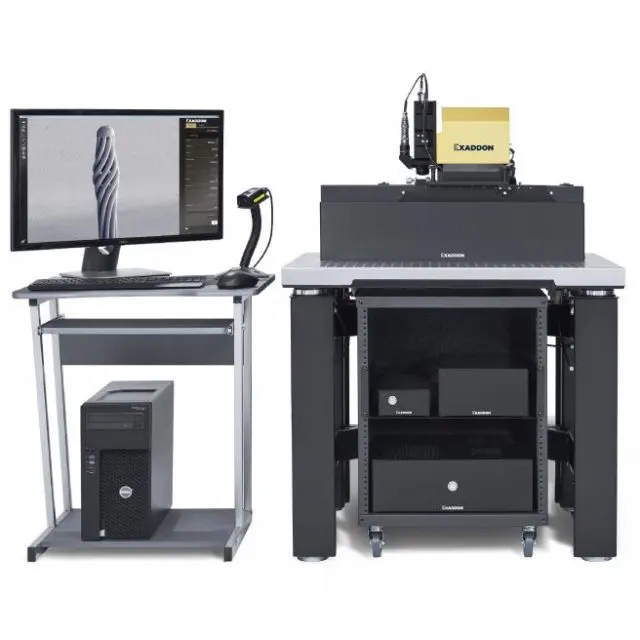Last month, researchers at Carnegie Mellon University’s College of Engineering and the University of Pittsburgh’s School of Medicine demonstrated a 3D printed microneedle array platform capable of delivering vaccines directly into the skin, with the particular goal of improving COVID-19 vaccine delivery in the developing world. The study was conducted using micro-stereolithography PμSL 3D printing technology developed by Boston Micro Fabrication and is the latest effort in a race to the most precise 3D prints to produce objects used in our macroscopic world.
BMF
Leaving out for one second the technologies for nano 3D printing, which deserve a dedicated article and are capable of achieving nanometric (1/1,000,000th of a meter) resolution, for a large and growing number of technical applications, here we zoom in on companies using advanced and ultra-precise stereolithography to make parts with a resolution of just a few microns (1/1,000th of a meter).
For the Carnegie Mellon-led project, Professor Ozdoganlar’s team used stereolithography-based (PμSL) micro 3D printers from Bostom Micro Fabrication (BMF). Using polymer and composite additive manufacturing, BMF is able to produce high-precision/high-tolerance industrial parts (2μm printing resolution and +/- 10µm tolerance).
“We are thrilled to collaborate with Professor Ozdoganlar and Carnegie Mellon on such an important and impactful project. Our micro-precision 3D printing technology allows for the rapid and precise fabrication of microneedle arrays, resulting in time and cost savings that far exceed traditional manufacturing methods,” said John Kawola, CEO of Boston Micro Fabrication.
Common medical applications for BMF’s PμSL technology include endoscopes, cardiovascular stents, and blood heat exchangers. PμSL technology has already been used to 3D print a spiral syringe needle for minimally invasive surgery, a 3D printed valve for a gene sequencer, and lab-on-a-chip (LOC) devices.
BMF’s ultra-high-resolution 3D printers are part of the company’s microArch series, which includes systems capable of anywhere between 25μm to just 2μm resolutions. The microArch P-130 and microArch S-130 are the highest resolution 3D printers, developed for applications that require tight tolerances, with BMF’s range of materials. The idea behind achieving such a high-resolution is actually to compete with injection molding level tolerances.
Nanofabrica
Nanofabrica is one of BMF’s leading competitors in the micro 3D printing segment. The Israeli company is leading the field of precision digital manufacturing with its additive manufacturing systems, the TERA 250, based on innovative Micro Adaptive Projection technology.
Nanofabrica technology brings the benefits of AM to micro manufacturers, including previously impossible part complexity (enhancing design and functionality), no tooling costs, minimal setup costs, and the ability to mass customize and personalize products.
Manufacturing on Demand
The TERA 250 combines semiconductor lithography and advanced optics together with 3D printing. The printer can reach a resolution of 1 μ over a relatively large build volume of 50x50x100 mm. This enables users to either print one large and ultra-precise part or fit in many micro parts together on the build plate and complete manufacturing of hundreds of parts over one night shift. This means having a mass manufacturing capability for microscopic parts.
The TERA 250 system be thus used for high-volume applications, enabling micro manufacturers to reduce the reliance on economies of scale, as the technology makes full production runs measured in thousands as inexpensive as producing one.
Exaddon
Switzerland-based Exaddon also offers high-precision and innovative additive micromanufacturing solutions for companies at the forefront of innovation. Only, it does it in metal. The company’s CERES printing system is designed primarily for researchers and scientists to conduct additive micro-manufacturing (µAM) of metals on the micrometer scale.
CERES can print complex micro-metal objects with even nanometric resolution, in sizes from 1 µm to up to 1000 µm, at room temperature and without the need for post-processing. Exaddon’s technology combines nanometer-accurate positioning, air pressure-driven liquid dispensing, electrochemical deposition and optical force feedback. The system is operated by CAPA software, which has an intuitive user interface and seamlessly connects all parts of the system.
CERES prints at room temperature, with no post-processing necessary. It can print overhanging parts without any need for support structures – a key differentiator to other metal AM technologies.
Two high-resolution cameras with computer-assisted alignment enable pinpoint-accurate printing, for example, printing directly onto integrated electrodes that are pre-defined on a chip surface. The cameras also support automated iontip loading, as well as visualization of the printed structures.
* This article is reprinted from 3D Printing Media Network. If you are involved in infringement, please contact us to delete it.
Author: Davide Sher







Leave A Comment